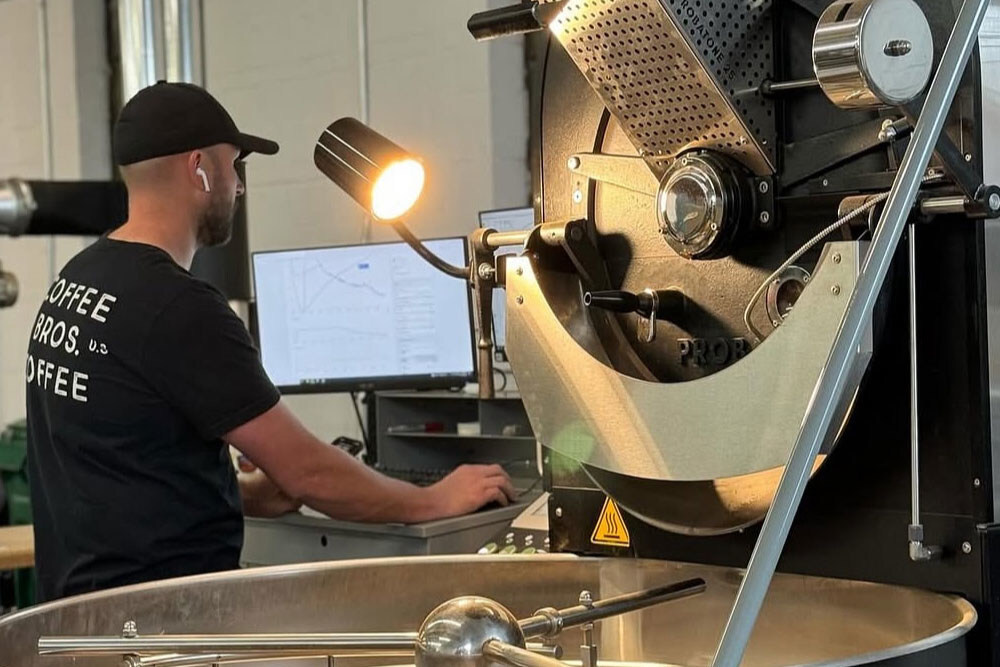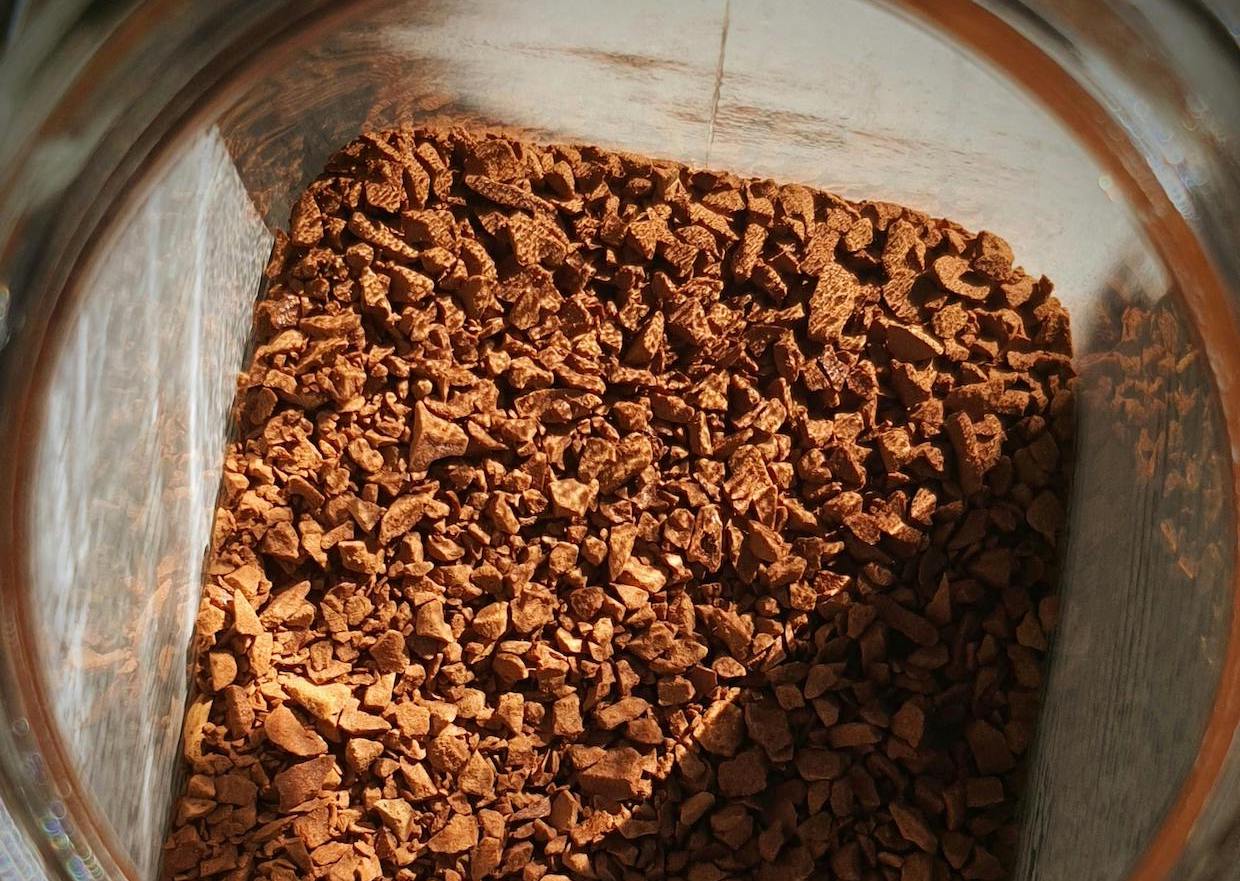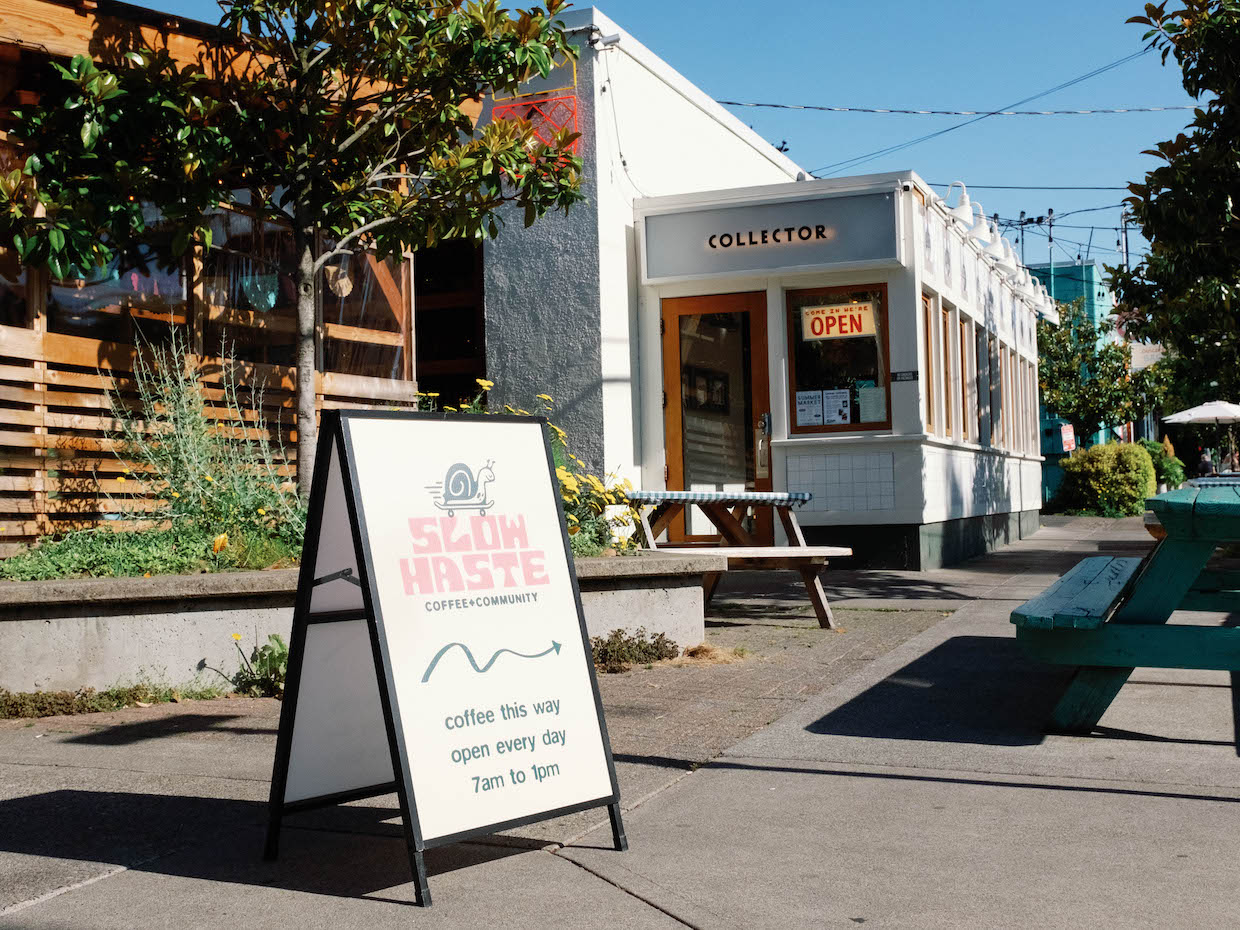Opening a coffee roasting facility involves a lot of decisions. From choosing the right machine and equipment to sourcing high-quality, cost-effective green coffee, there are endless factors to consider. While decisions about equipment are critical, the layout and design of the roastery are equally important.
A well-planned facility isn’t just about fitting in all the necessary machinery; the layout directly impacts the success of a roasting operation. Poor design choices can lead to workflow bottlenecks, safety hazards, and even costly redesigns when looking to scale.
By putting more intention behind the design and layout of their facility, roasters can create a safer, more efficient workspace that supports higher output and greater long-term growth potential.
I spoke to Gian Pietro Balboni, a technical process engineer at IMF Roasters, about how to design a functional roasting plant that meets needs and demand both now and in the future.
You may also like our article on what roasters need to know when upgrading their facilities.


How roastery design impacts workflow efficiency and safety
In the beginning stages of opening or designing a roasting facility, many roasters primarily focus on all the equipment they’ll need. This ranges from essential tools like scales and scoops to more costly items like roasting and packing and sealing machines.
This focus is only natural. Equipment like roasting machines and storage silos are huge investments, take up a lot of space, and dictate other equipment requirements like ventilation systems.
Although these choices are critical, they’re just one piece of a larger puzzle. Even the best equipment won’t perform efficiently if the facility’s space and layout aren’t designed with workflow in mind. As such, roasters must understand how to optimise the design of their roasting facility. Overlooking this step can lead to operational bottlenecks and even safety risks down the line, harming productivity and profitability.
IMF Roasters, a leading Italian commercial roasting equipment manufacturer, designs fully customised roasting plants that take into consideration both equipment and overall workflow.
“We begin with a detailed analysis of the facility’s available area to determine the correct sizing and placement of equipment,” says Gian Pietro Balboni, a process engineer at IMF’s technical office. “This includes planning sufficient maneuvering space for operators during production and maintenance, which not only boosts efficiency but also upholds stringent safety standards.”
The design of a roasting space should take into account how coffee moves through the facility at each production stage – from receiving and storing green beans to roasting, cooling, packaging, and shipping. Every step should transition smoothly to the next without backtracking or bottlenecking.
Optimising the roastery’s layout and workflow ultimately helps minimise unnecessary movement and handling while saving time and energy. It also helps ensure that every piece of equipment works at peak performance and guarantees operator safety.


Considering operation size and future growth
There’s no one-size-fits-all approach to designing a roasting facility. Every decision should be tailored to an operation’s size, ensuring it meets anticipated production volumes without inhibiting future growth.
“For smaller setups, the design tends to be simple and flexible,” Gian Pietro says. “In contrast, larger industrial-scale operations require dedicated zones for each phase of production, including receiving and sorting green coffee, roasting, blending, and packaging.”
At the initial planning stage, he explains that the IMF team collaborates closely with roasters to understand their specific needs and preferences.
“This collaborative approach allows us to design a customised layout that aligns with the client’s production needs, facility constraints, and future expansion goals,” he says. “We provide detailed documentation, including an installation layout and a plant flow diagram that maps out equipment placement and product flow, ensuring that every design decision supports both immediate operations and long-term growth.”
A plant flow diagram or process flow chart illustrates a roastery’s daily processes, allowing operators to pinpoint where each process happens in the facility and which equipment is involved at each stage. This tool can also help set equipment parameters and physical space constraints.
“For a smaller facility, the essentials include a roaster (whether manually or pneumatically loaded), a storage area for roasted coffee, and a packaging section,” Gian Pietro explains.
However, he adds that a plant operating on an industrial scale will typically require the following equipment and systems or zones:
- An area to receive green coffee
- A cleaning and sorting section
- Automated storage with blending capabilities for green coffee
- A dedicated roasting zone
- A storage area for roasted coffee
- Zones for blending and/or grinding
- Storage for ground coffee
- Primary and secondary packaging lines
Building flexibility into a roasting facility’s setup is also crucial to accommodate future growth without requiring a complete design overhaul. Using modular storage systems and moveable workspaces helps roasters keep up with seasonal demand fluctuations and scaled operations.
“Our approach is modular by design, so it’s straightforward to scale operations,” Gian Pietro tells me. “By anticipating future expansions right from the layout stage, we minimise the need for expensive reconfigurations later on.”


Essential equipment and systems in a roasting facility
No matter the size of their facility, most roasters rely on the same core equipment, which includes a roasting machine, scale, coffee storage, analysis tools, and a system to pack and seal roasted coffee bags.
Most roasting facilities will also need systems for receiving, storing, rotating, cleaning and sorting, and dosing green coffee.
Optimal storage conditions are critical to preserving the freshness and quality of green coffee. Ideally, humidity levels should be between 60% and 65%, with temperatures ranging from 15°C to 25°C (59°F to 77°F).
To achieve these conditions, roasters must invest in the appropriate ventilation systems and green coffee silos: storage containers designed specifically for green coffee to prevent exposure to moisture and oxygen.
Storage needs will vary by operation size, so IMF designs custom green coffee silos in various shapes (polygonal or circular), dimensions, and layouts (vertical or linear) to fit each facility.
Just as with green coffee, roasted coffee requires dedicated storage spaces, as well as systems for blending, grinding, storing, and packaging products. Gian Pietro explains that to ensure an efficient process, it is crucial to implement solutions allowing optimal management of ground coffee storage systems tailored for capsule or pod production, single-dose packaging, and vacuum packaging lines.
While not essential for every roastery, many operators find roasting management software helpful. Technology like inventory management systems and automated and AI-driven roast profile software can help streamline workflow and minimise manual errors, saving labour costs.
This has never been more important for roasters. Over the last year, green coffee prices have more than doubled, credit rates are climbing, and business costs – ranging from energy to logistics – are at record highs.
In this landscape, managing cash flow has become more challenging for roasters, so investing in cost-cutting measures is particularly useful.


The benefits of working with a roasting plant specialist
Starting a roastery is no small task. Operators must know how to install and arrange all of their equipment to optimise and streamline operations, setting them up for long-term success.
Navigating this level of detail, however, can be challenging for roasters, especially those with less experience.
“Collaborating with an experienced plant designer ensures that every aspect of the facility is meticulously planned,” Gian Pietro says. “Each component needs to be integrated within the overall design to ensure seamless workflow and quality control throughout the production process.
“The installation layout outlines the exact positioning of equipment based on the client’s facility blueprints, complete with plan views, elevations, and section drawings,” he tells me. Meanwhile, the plant flow diagram shows how all equipment interconnects to form an efficient, streamlined production flow.
“These tools are invaluable for ensuring that the plant not only meets current production needs but is also adaptable for future changes,” he adds. “If budget constraints arise, we’re prepared to rework the design to deliver a more cost-effective solution without compromising on safety or scalability.”
IMF also fully customises each facility layout based on the roaster’s unique needs, factoring in production volume, expansion plans, and even additional space for workshops or cuppings.


Opening a roastery is an exciting milestone, but it certainly doesn’t come without its challenges. To be successful, roasters must avoid one of the most common pitfalls: designing their facility around their equipment without considering the overall layout and workflow.
By approaching coffee roastery design more holistically and prioritising optimal space and workflow, roasters ensure an efficient, safe operation from day one. With thoughtful planning, roasters can create a facility that not only meets their current needs but can also adapt as their business evolves.
Enjoyed this? Then read our article on how to know when it’s time to upgrade to a new roaster.
Photo credits: Caffè Mokarico, Fausto Kaffeerösterei Gmbh, Verzì Caffè, Sputnik Coffee Company, Viva Sara®
Perfect Daily Grind
Please note: IMF Roasters is a sponsor of Perfect Daily Grind.
Want to read more articles like this? Sign up for our newsletter!











